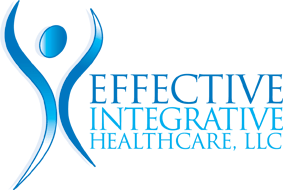7 Types of Scoliosis
Scoliosis is a spinal condition affecting 2 to 3 percent of the US population, often beginning in childhood. Scoliosis symptoms include lopsided ribcage, uneven hips and shoulders, and tilted or off-center head. While boys and girls are diagnosed equally, girls are eight times more likely to require treatment for a severe case.
Scoliosis occurs in different forms, which are classified by the cause and age of onset. The American Association of Neurological Surgeons (AANS) recognizes three categories:
- Idiopathic scoliosis, which has no known cause, accounts for 80 percent of cases.
- Congenital scoliosis is the result of a spinal defect present at birth.
- Neuromuscular scoliosis develops in conjunction with a neurological or muscular disease, such as cerebral palsy or muscular dystrophy.
Take a look at the seven types of scoliosis that fit within these three categories.
- Congenital scoliosis affects about one in 10,000 newborns. It occurs when one or more spinal vertebrae are malformed or missing. This can lead to a sideways spinal curvature, plus an additional curve in the opposite direction as the body attempts to compensate for the abnormality.
- Early onset scoliosis (EOS) includes any type of scoliosis discovered before age 10. Because the spine is still growing at this age, EOS can affect more than just the spine—it can also cause malformed ribs and affect lung development.
- Adolescent idiopathic scoliosis is, by far, the most common type of scoliosis. It affects as many as four out of 100 children between ages 10 and 18. While the name “idiopathic” means it has no definitive cause, researchers have discovered that it sometimes runs in families, suggesting a genetic link.
- Degenerative scoliosis—also known as adult onset, late onset, or de novo scoliosis—may occur when the spinal discs and joints degrade as a natural consequence of aging.
- Neuromuscular scoliosis develops as a secondary symptom of a spinal cord, brain, or muscular disease. The spinal curvature may progress until the patient can no longer walk.
- Syndromic scoliosis develops alongside a syndrome, such as Rett’s syndrome, Beale’s syndrome, osteochondrodystrophy, and various connective tissue disorders. Symptoms are highly variable, but this condition is well-understood, so children with certain disorders can be screened early for scoliosis.
- Scheuermann’s kyphosis is similar to scoliosis, but it causes the spine to arch forward at the mid to upper back rather than curve from side to side. This irregularity is caused by wedge-shaped vertebrae that don’t stack straight.
Clearly, scoliosis comes in many forms. It’s such a variable condition that making an exact diagnosis and determining the best course of treatment can be tricky. That’s why we recommend visiting Effective Integrative Healthcare at the first sign of scoliosis. While there is no cure for this condition, chiropractic adjustments and other therapeutic interventions can help slow its progression. Give us a call at 410-729-2200 or contact us online to schedule a free scoliosis consultation at one of our locations in Crofton, Millersville, or Lanham, MD.
